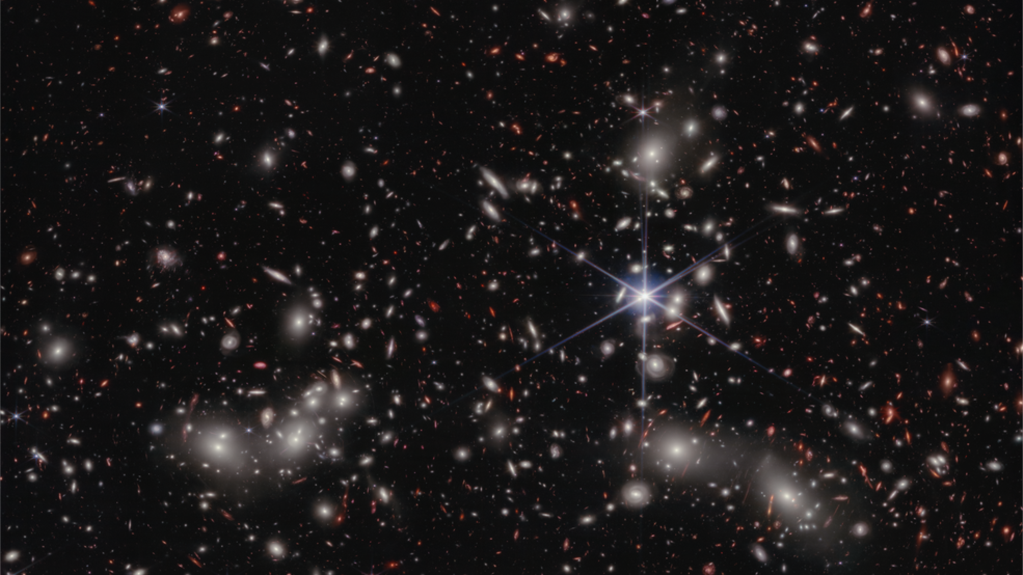NASA’s James Webb Space Telescope has discovered new details about a huge grouping of galaxies known as Pandora’s Cluster.
The American space agency says Webb captured the new details in a single image with its powerful infrared instruments. The findings are expected to help astronomers learn new things about the development of galaxies and how they influence each other.
Pandora’s Cluster is officially known as Abell 2744. NASA reports the cluster is believed to have formed from several smaller galaxy clusters over a period of about 350 million years.
In the past, Pandora’s Cluster was observed by NASA’s Hubble Space Telescope. It has also been studied by the space agency’s Chandra X-ray Observatory, as well as by several land-based telescopes that collected image and radio data.
The cluster has long been an observational favorite of scientists because of its ability to magnify more distant galaxies. This happens because the combined mass of the galaxy clusters creates a powerful gravitational lens, NASA reports.
This lens is created by a natural, magnifying effect of gravity. The process permits “much more distant galaxies in the early universe to be observed by using the cluster like a magnifying glass,” NASA says.
The method permits scientists to observe structures from the early universe that may not otherwise be seen.
The Hubble was only able to carry out detailed observations of Pandora’s center. But NASA says Webb used the lensing method to observe multiple areas of the cluster. This resulted in never-before-seen details of Pandora, which includes galaxies of different ages, sizes and shapes.
Astronomers used Webb’s infrared instruments together with the cluster’s own gravitational lens to create a detailed image of more than 50,000 sightings of near-infrared light.
Rachel Bezanson is an astronomer with the University of Pittsburgh in Pennsylvania. She is also an investigator with the UNCOVER program, which seeks to use Webb observations to reach certain science goals.
She said in a statement that when the new images of Pandora’s Cluster began to come in, she and other team members felt “star-struck.”
“There was so much detail in the foreground cluster and so many distant lensed galaxies, I found myself getting lost in the image, Bezanson added. “Webb exceeded our expectations.”
NASA said the team used Webb’s Near-Infrared Camera to observe Pandora’s Cluster with exposures lasting four to six hours. This resulted in a total observing time of about 30 hours.
Astronomer Ivo Labbe is with Swinburne University of Technology in Melbourne, Australia. She is also an investigator on the UNCOVER program. Labbe said the new Webb image clearly shows elements from hundreds of distant galaxies. When examined closely, the image suggests the existence of more and more galaxies within Pandora’s Cluster.
The image, Labbe, added, showed a stronger, wider, deeper and better lens than had ever been seen before. “My first reaction to the image was that it was so beautiful, it looked like a galaxy formation simulation,” she said. “We had to remind ourselves that this was real data, and we are working in a new era of astronomy now.”
The researchers say the next step for them is to closely examine the imaging data and identify galaxies for follow-up observations with another Webb instrument.
That instrument, the Near-Infrared Spectrograph, aims to produce exact distance measurements. It is also designed to provide additional, detailed data on the different structures contained in Pandora’s Cluster. NASA says it plans to begin those Webb observations later this summer.
The space agency noted that the latest data collected by Webb has been publicly released. This move is meant to help astronomers around the world use the valuable new data to plan their own scientific studies of Pandora’s Cluster.
I’m Bryan Lynn.

